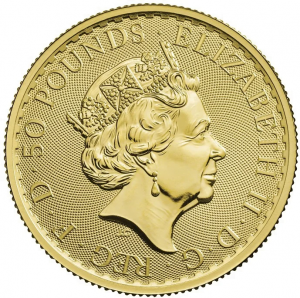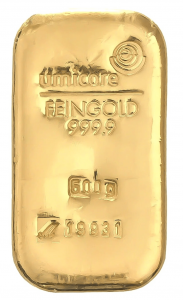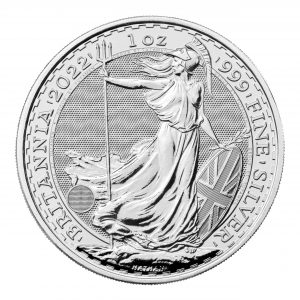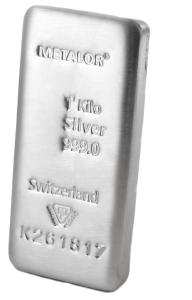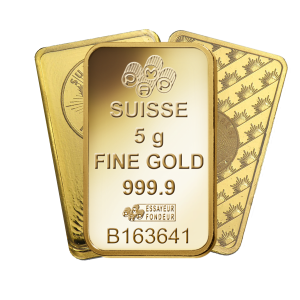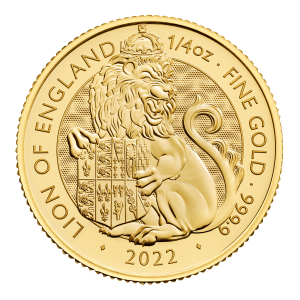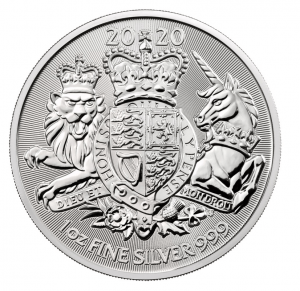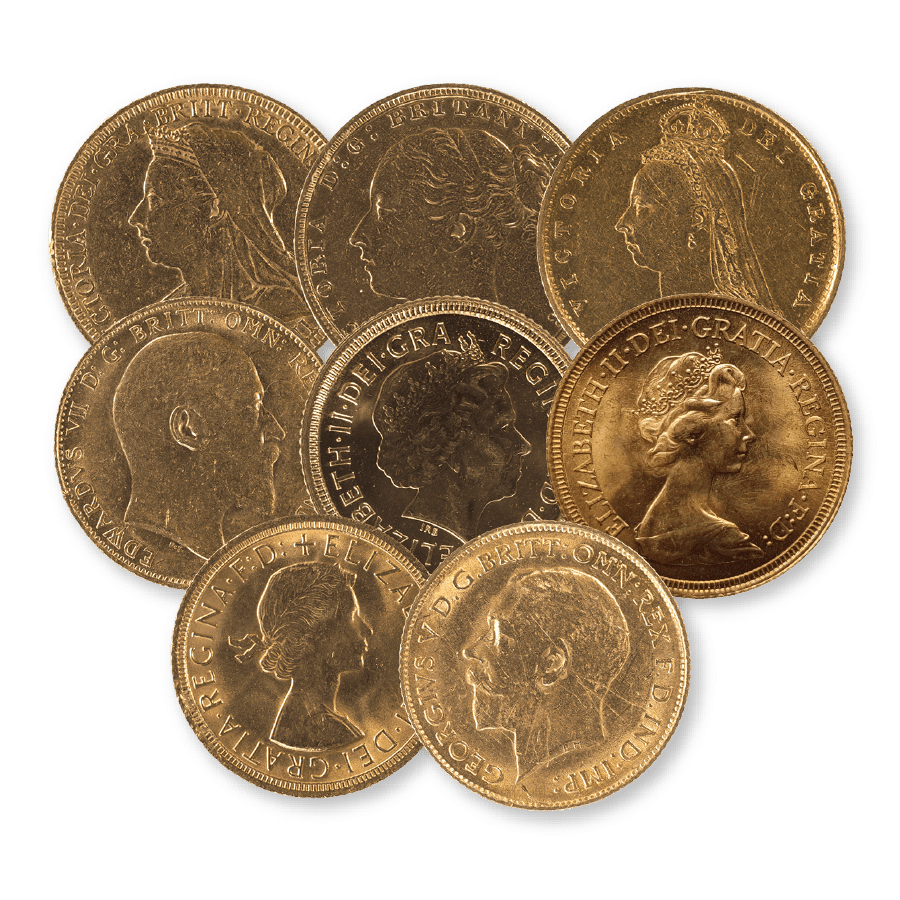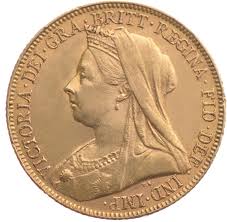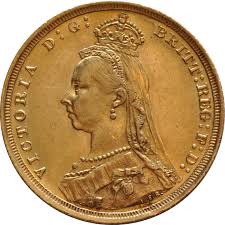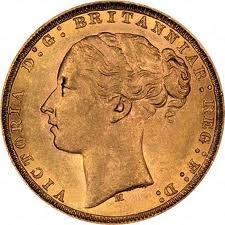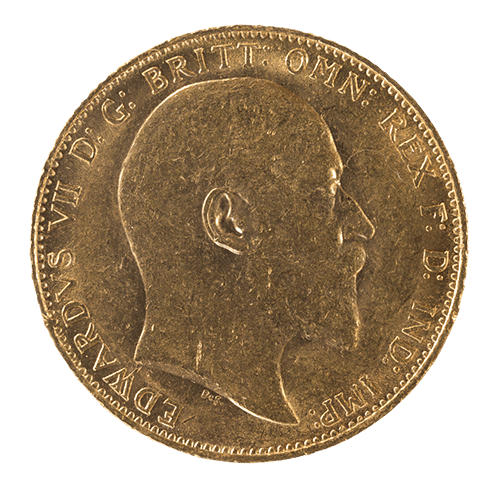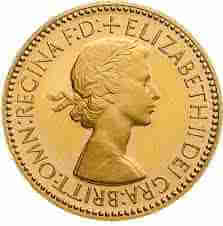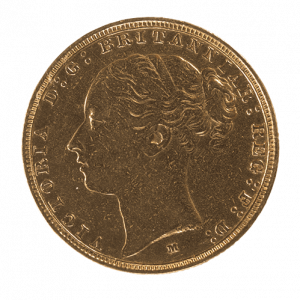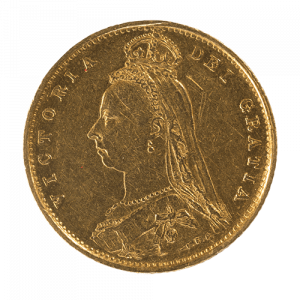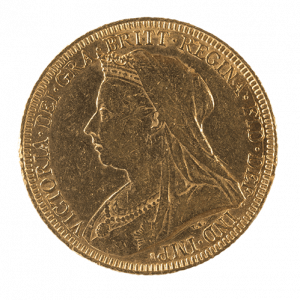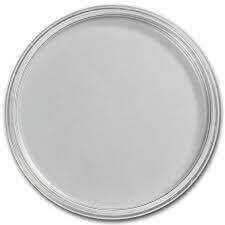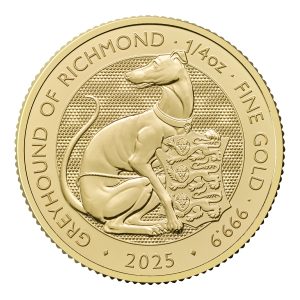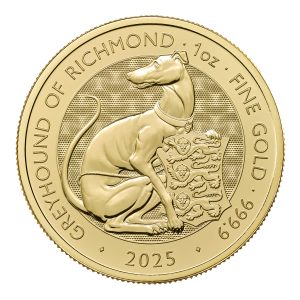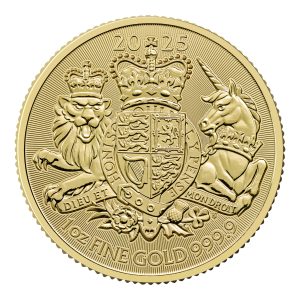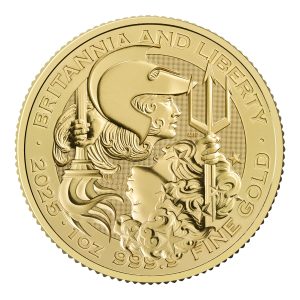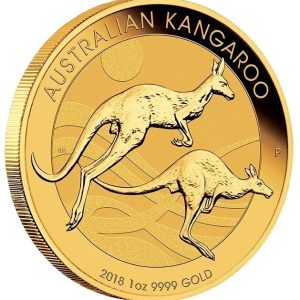Sovereign 8 coin bundle (Various Portraits)
£5,174.25
Incl. £0.00 VAT
Free & fully insured UK Delivery. Learn more
Secure & flexible payments. Learn more

Buyback Guarantee Learn more
Specifications
8 Portrait Sovereign coin bundle
You will receive 8 x full Sovereigns, 1 each of Queen Victoria jubilee head, Queen Victoria Veil (old) head and Queen Victoria Young (bun) head, George V, Edward VII, Elizabeth Young Head, Elizabeth Decimal Portrait and Elizabeth Old Head (4th or 5th portrait). This is a cheaper way of buying eight different portrait Sovereigns from across the past 200 years
All our pre-owned coins undergo strict quality checks by our team of experts to ensure their condition is excellent. If you’re seeking ownership of most of the sought after Sovereign portraits, then this bundle is a great choice.
The pictures illustrate the type of coin you’ll receive, not the exact item.
1. Victoria Young Head Sovereign
The obverse features the first portrait of Wuenn Victoria, while the reverse displays the classic St.George and Dragon design by Benedetto Pistucci.
The coins will date between 1871-1887.
Queen Victoria’s achievements as monarch are known the world over. Before being usurped in 2010 by Elizabeth II, Victoria was the longest-reigning UK monarch and was also the figurehead of the British Empire at the height of its global reach. Known as the Victorian era, the duration of her reign is remembered for huge technological scientific and political advancement, including such accomplishments as building the London underground system.
The Victoria Young Head Sovereign reflects the period at the beginning of her reign, which experienced various ups and downs like The Great Famine (1845), rebuilding relations with France, and self-imposed isolation after the death of her husband in 1861.
Young head design & mintage
Unlike the Sovereigns of today, the Sovereign Victoria Young Head was struck in coin alignment, which basically means the reverse is upside down to the head. This changed in later Sovereigns to what’s known as medal alignment, which refers to the front and back being minted the same way up. This stems from the medals commonly being displayed within a swivel mechanism. The obverse portrait of Victoria represents a youthful look for the Queen with hair tied up in a bun, and also reflects the young, evolving feeling of the era.
While the reverse most commonly features St.George slaying the dragon, most dates were also issued with shield back design, which is rarer and trade higher. Mint marks for these early Victoria coins are limited to London, Sydney and Melbourne, as the imperial spread had only just begun. Later Sovereigns were minted in a wider number of places, reflecting the growing British Empire. Mintage quantities varied from a low of around 1.5 million in 1887, reaching a peak in 1872 of more than 16 million.
2. Victoria Veil Head Sovereign
The obverse features the Victoria Old Head, also known as the veiled head, while the reverse displays the classic St.George and Dragon design by Benedetto Pistucci. This portrait represents the image most of us associate with Queen Victoria. Perhaps because it spans both the turn of the century, the peak of the Victorian age, and her eventual death in 1901.
The coins will date between 1893-1901. The annual mintage of the coin is fairly consistent, averaging around the 10 million mark, although a spike to double this quantity at the turn of the Twentieth century reflects the significance and celebration the new century brought. The coins are available with London, Melbourne and Sydney mintmarks for most of the 9-year run, and some coins produced by the Perth mint are available from the final 3 years of production only.
3. Victoria Jubilee Head Sovereign
The obverse features the Victoria Jubilee Head Gold Sovereign, while the reverse displays the classic St.George and Dragon design by Benedetto Pistucci. The redesign was created to celebrate the Queen’s jubilee year. The truth is that the jubilee portrait was long overdue after 17 years of the Victoria Young Head.
The coins will date between 1887-1893. They were then updated to the final Victoria portrait version, the Old (or veiled) head to reflect the monarch’s ageing features more accurately.
The picture illustrates the type of coin you’ll receive, not the exact item
Jubilee head mintage
Due to the relatively short run of the jubilee head (7 years) compared to the previous portrait’s 17 years, its total mintage was far lower and therefore less are in circulation. Despite it being a newer coin than the Young Head, you could argue it’s slightly rarer due to the lower circulation number. Like its predecessor, coins can contain mintmarks from London, Melbourne or Sydney. The Old Head which came next added Perth to this list, and the ‘King Sovereigns’ of George and Edward added other commonwealth countries to its list of mints such as Canada (Edward), and eventually, India and South Africa (George V Sovereigns), reflecting the growing British Empire.
First medal alignment Sovereign
The Victoria Jubilee Head Sovereign was minted in what’s called ‘medal alignment’ and marked a theme that still continues with today’s modern Sovereign coins. This simply means that the portrait and tail side are both the same way up. This sounds obvious and unremarkable, but it replaced the previous method which adorned a majority of Victoria Young Head coins which featured ‘coin alignment’. This version minted the reverse at 180 degrees to the obverse, in other words, upside down. The medal alignment is in fact based on the common practice of wearing medals on a vertically pivoting clasp mechanism. In order to see both sides of a medal, military personnel simply swivelled the coin on this vertical axis and the reverse would be viewed as the intended way up.
Jubilee celebrations
The Victoria Jubilee Head Sovereign re-design marked Queen Victoria’s Golden Jubilee (50 years since taking the throne on 20 June 1837). Celebrations included a lavish banquet with a long list of illustrious guests including 50 kings and princes and the British heads of the various growing global colonies. It was followed the next day by Victoria taking to the streets for a procession in an open carriage, known as a landau.
4. Elizabeth II Decimal Portrait Sovereign
The obverse features the Queen Elizabeth second portrait, while the reverse displays the classic St.George and Dragon design by Benedetto Pistucci.
The coins will date between 1974-1984.
Since decimalisation in 1971, there have been three-coin portraits of the Queen, and this coin is fondly known as the ‘Second Portrait’ because the obverse of the coin has the second portrait of Her Majesty to feature on a Sovereign. The reverse proudly depicts St George’s epic clash with the dragon. The coin contains 7.98 grams of 22-carat gold. These ‘second portrait’ coins were issued for nine of the years between 1974 and 1984.
Interestingly, the second portrait was ready to be used in 1968 (and was in fact first used on 10p & 5p coins from that year) but as no sovereigns were minted between 1969 – 73, the first year that this second portrait was utilised on a sovereign was 1974.
This second royal portrait was Arnold Machin’s fine handiwork and was chosen by the Queen herself in 1964. Machin was made a Royal Academician in 1956 and went on to create the obverse and reverse designs of the 1977 Silver Jubilee crown.
What was decimal
Decimal Day was 15 February 1971 and marks the entire UK monetary system being updated to replace the old Pounds, Shillings and Pence format. It was designed to modernise our cash system and bring us more in line with Europe, but the new system was met with confusion and reluctance. Unlike single coin or note updates now, the Royal Mint had a massive challenge on its hands. It began with educating the public and businesses as to how the new system would work. They then had to pre-make various denomination of coin in preparation for the launch. The 6 billion new coins required, provided the catalyst for the Royal Mint to move from their modest premises in Tower Hill to more substantial headquarters in Wales.
5. George V Sovereign
As the second son of King Edward VIII, George V succeeded his father in 1910. His grandmother was the long-reigning Queen Victoria and he was only third in line to the throne when he was born in 1865. But after his elder brother’s untimely death in 1892, he became next in line for the throne. His reign marked several significant changes. The political backdrop saw the growth of fascism, socialism and communism, with much of this contributing to the First World War (1914-1918) and later the Great Depression. On home soil, Parliament legally recognised the supremacy of the House of Commons over the unelected Lords.
Coin design
The obverse features a portrait of George V facing left, complete with a finely manicured moustache. As with all the modern Sovereigns, the reverse displays the classic St.George and Dragon design by Benedetto Pistrucci.
Interestingly for collectors, 2 versions of the coin were produced. The standard design on a majority of the coins (1911-1928), and a second version with a smaller head portrait on later George V Gold Sovereigns. Unlike longer reigning monarchs such as Victoria and Elizabeth, where different portraits were used to reflect the ageing of the Queen, the smaller George portrait was motivated by technical issues. It’s said that the greater amount of metal displaced when striking the larger head wore the Royal Mint’s dies quicker, proving expensive to replace more often.
The smaller portrait of later coins reduced this stress on the Mint’s dies. The other obvious update to the second coin version is the stronger border and inner circle and a more detailed moustache.
Mintage
While King George V reigned from 1910-1936, the coins were only produced between 1911-1932. Annual mintage varied considerably, ranging from over 40 million in the first year to just over 1 million coins in 1932.
As was common with the British Empire, The George Sovereign was produced in various mints and therefore coins are found with mintmarks from as far afield as Ottowa (Canada), Bombay (India), Pretoria (South Africa), 3 cities in Australia and London. Each proudly displays the relevant mintmark, except London, produced coins, which have no mark at all.
6. Elizabeth II Young Head Sovereign
The obverse features the Queen Elizabeth first portrait, while the reverse displays the classic St.George and Dragon design by Benedetto Pistucci.
The coins will date between 1957-1968.
Design & Mintage
The Elizabeth Young Head coin marks the first Sovereign to feature Queen Elizabeth on the obverse. Also known as the Liz first portrait, it can be referred to as the pre-decimal Elizabeth Sovereign. Interestingly, the coins available are actually the second issue to feature Queen Elizabeth, after a small number of proof coins were issued in 1953 with the same portrait as this second issue. However, none of the initial coins was released so are held privately, possibly by Royalty. If you ever see a 1953 Young Head coin, snap it up!
The portrait is designed by Mary Gillick and features a young Elizabeth wearing a wreath on her head, reflecting the optimism of the era with a new monarch on the throne. The design achieved a refreshing contrast to previous Sovereign portraits with a modern feel and look. The pre-decimal depiction of the Queen was featured both on UK coins and those of the commonwealth.
History
Born in 1926, Elizabeth succeeded her father George VI to the throne in 1952 at the tender age of 26. Becoming the Queen of the UK also meant being Queen to Canada, Australia and New Zealand and being head of the commonwealth. Actually, when she was born as third in line to the throne, she wasn’t expected to become queen due to the young age of those in front of her, especially her uncle Edward, who was expected to marry and have children himself. However, when her grandfather George V died in 1936, her uncle succeeded him to the throne, only to abdicate the same year after his proposed marriage to a divorcee Wallis Simpson caused outrage. Elizabeth’s father George VI becomes the 3rd monarch of the year. If he’d later had a son, Elizabeth would have been pushed down the hierarchy. But he didn’t, and after his death in 1952, young Elizabeth took to the throne against all odds.
7. Elizabeth II Old Head Sovereign
The obverse features the Queen Elizabeth 4th portrait, while the reverse displays the classic St.George and Dragon design by Benedetto Pistucci.
The coins will date between 1998-2015.
Design
The 4th head design is the first to portray The Queen as we’re familiar with her today. It succeeds the short-lived Raphael Maklouf 3rd portrait and is decidedly more jowly and realistic than it’s predecessors. Like the previous design, the 4th portrait (by Ian Rank-Broadley) is cut off at the neck, as opposed to the full bust featured in the Young Head and Decimal versions. However, the designer felt the queen’s maturity (she was 70 years old by now), should be celebrated in the new portrait rather than hidden and idealised.
Originally the Royal Mint ran a competition to create a portrait just for the front of the 1997 Gold Wedding Crown. However, the standard of entries encouraged them to use the new portrait on all new coins. The 5th portrait by Jody Clark has since followed (from 2015), which doesn’t represent a big departure from the 4th portrait.
Which period does this coin represent?
The 4th portrait represents a period of relative stability in the Royal family. Following the upheaval of Princess Diana’s death the previous year, the Royals worked to calm unrest and provide solidity. Elizabeth had been on the throne for 46 years by the time the new coin was launched, so an air of establishment and recognition is associated with this period. The coin issuance also spans the turn of the new millennium and the celebrations which followed. Politics and the economy varied during the period, with prosperity building in the early 2000s and the eventual credit crunch from 2007. The Royals have generally grown in popularity during this period with the more modern and down-to-earth approach of Princes William and Harry, and the birth of William’s children with the popular Kate.
8. Edward VII Sovereign
The obverse features Edward VII, while the reverse displays the classic St.George and Dragon design by Benedetto Pistucci.
The coins will date between 1902-1910 and were designed by George William De Saulles.G
Mintage and History
As the oldest son of Queen Victoria and Prince Albert, Edward succeeded his mother as monarch upon her eventual death in 1901. Due to Victoria’s record-breaking term as Queen, he was kept waiting until the age of 60 to eventually ascend to the throne. In a remarkable parallel to today’s Prince Charles, Edward held the post of Prince of Wales for longer than any of his ancestors due to his mother’s longevity. With his European connections and keenness for travelling, he personified the privileged elite.
Due to his long wait, he died only 9 years after taking the throne, and was succeeded by his son George V. This short period at the helm, coupled with his mother’s hugely significant reign, meant his impact on the British people is far less noteworthy than his predecessor. His main achievements were to foster good relations with European countries and modernise the British army. The Edwardian era is better known for marking a new century and with it, advancements in technology and the growth of socialism.
Annual Sovereign mintages ranged between sixteen and thirty million pieces, with a total issuance throughout the period of around 200 million. With the growth of the British Empire, coins were produced not only in London and Australia but also now in Canada too. Due to the short time on the throne, the coin design was never updated during Edward’s reign.
Orders are delivered free of charge within the UK only.
Delivery is in non-branded tamper proof packaging by Royal Mail Special Delivery and is fully insured. Delivery usually takes place before 1pm on the day following despatch, but some areas may run over this timeframe.
Maximum value per parcel is £50,000, so larger orders will be sent in multiple installments.
When placing your order, the delivery address needs to match the registered address of the buyer.
You’ll receive a despatch email with a tracking link once the goods are sent so you can see the status of the delivery and location of the parcel.
In the event that no-one is in to receive the delivery, you’ll be left a red card confirming attempted delivery, with confirmation on the Royal Mail tracking page. You then have the choice of arranging redelivery or picking up the parcel from your nearest sorting office.
For more details please see section 4 of our Terms & Conditions and our Delivery & Storage page.
If you request storage for your order, your goods will be sent free of charge to the storage vaults.
All gold & silver orders are stored at Loomis International in the UK and held on a fully allocated and segregated basis.
Storage fees are 1%+VAT/year for gold and 1.5%+VAT/year for silver, subject to minimum charges.
Please see further details of storage fees and minimum charges on our Storage & Delivery page.
Storage is charged at point of purchase by selecting ‘Buy with Storage’ to the next semi-annual pay date. Semi-annual storage dates are 15 March and 15 September each year and are subject to minimum charges for the period.
A recurring storage fee will be taken from your card at each semi-annual storage date.
You can opt to have your goods delivered at any time, subject to delivery charges of £25 +0.25% of the metal value.

